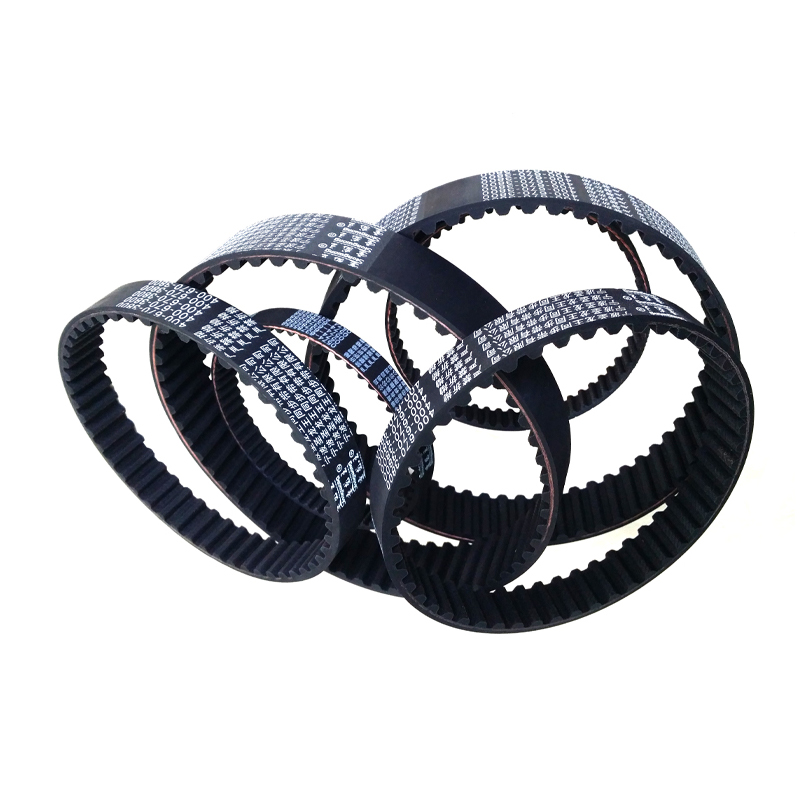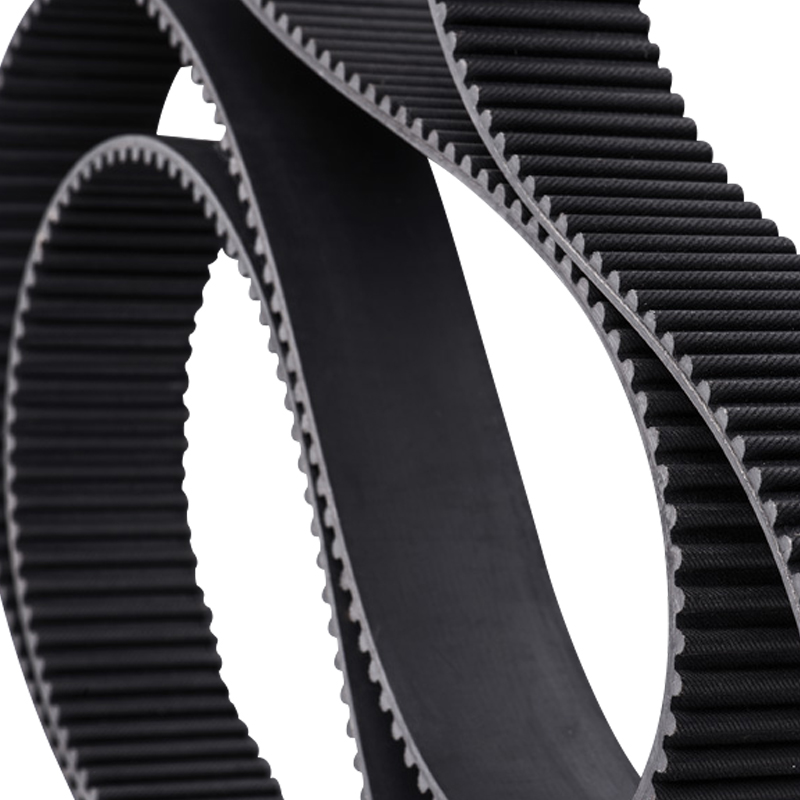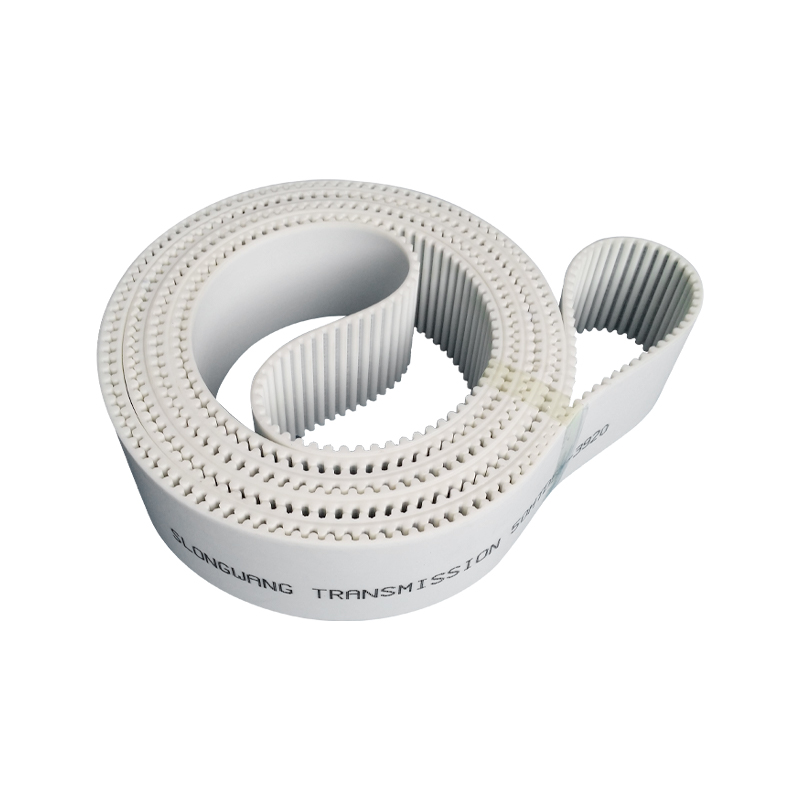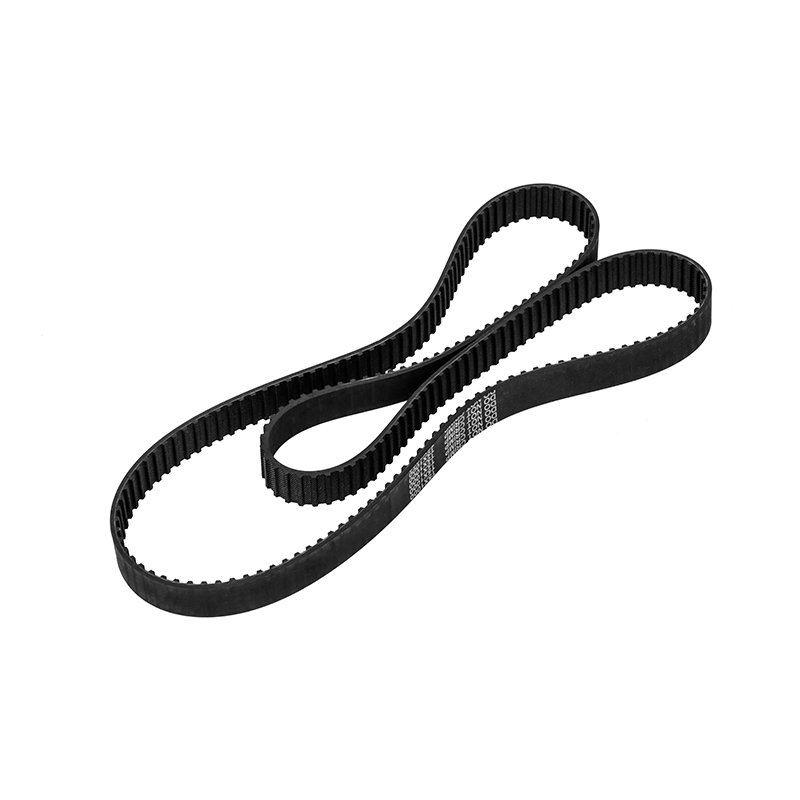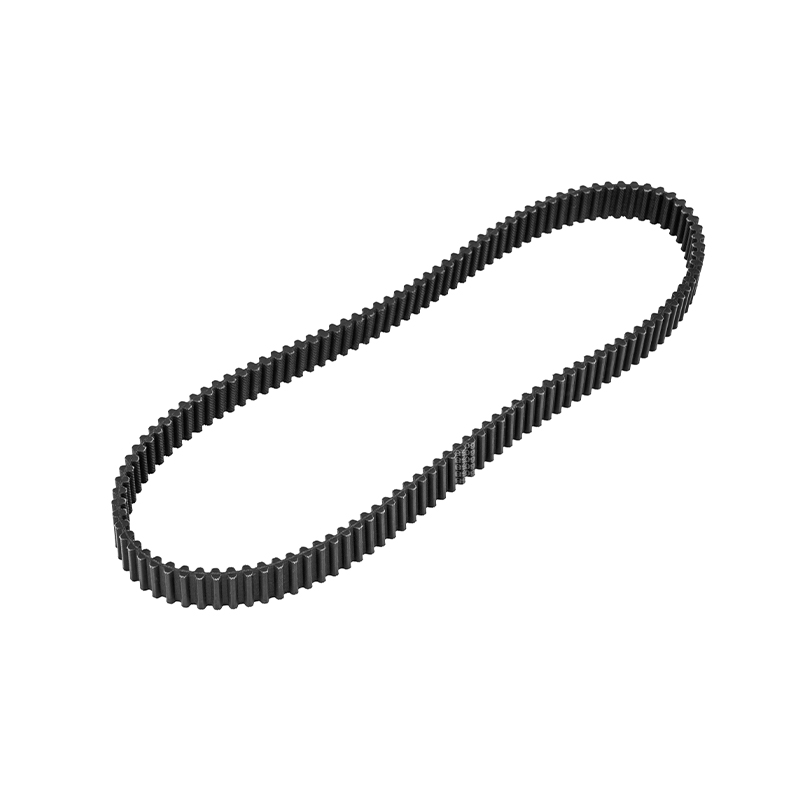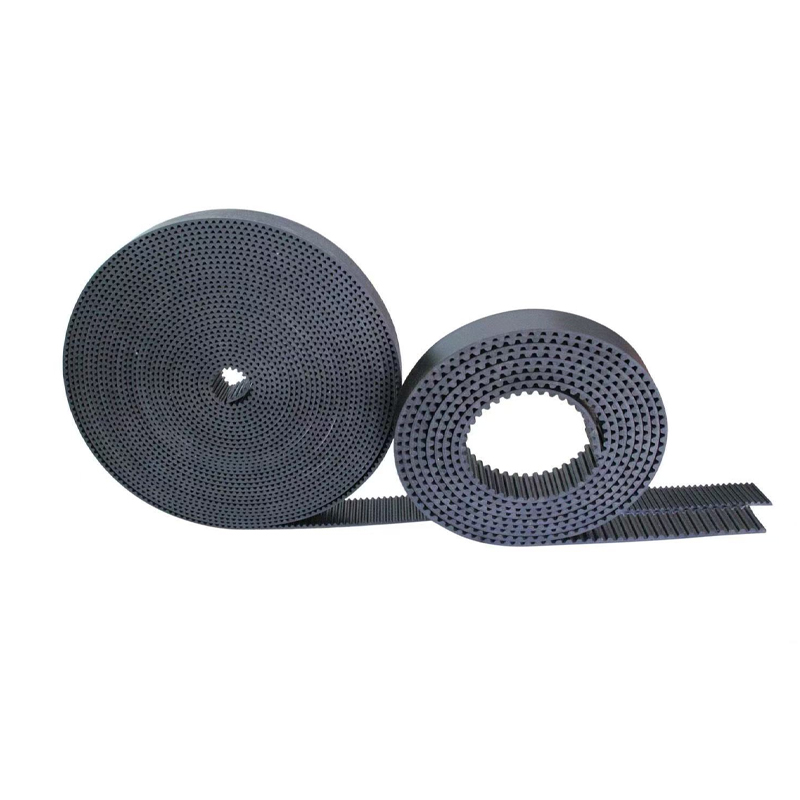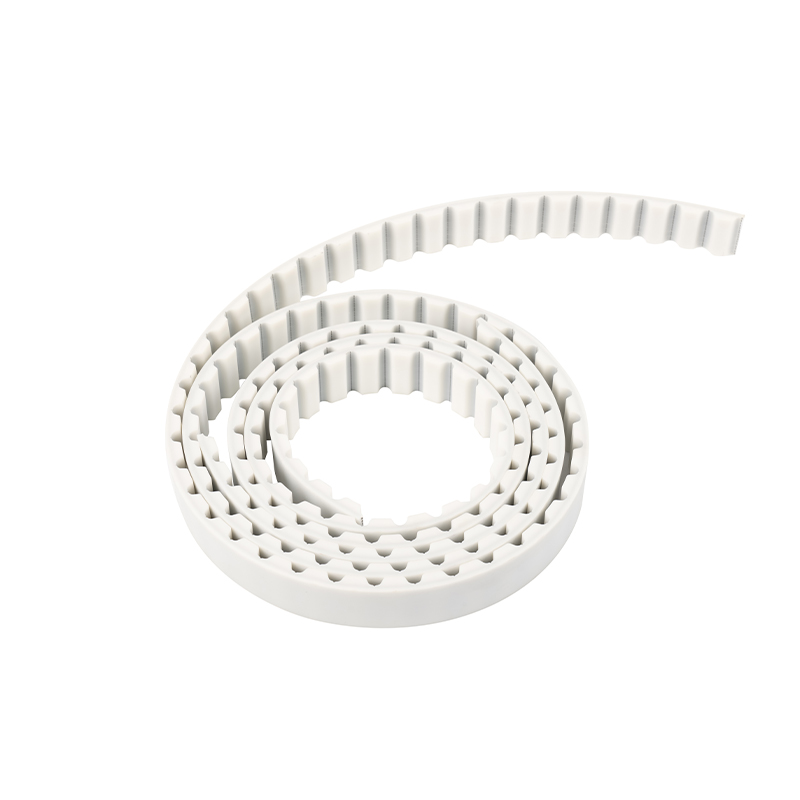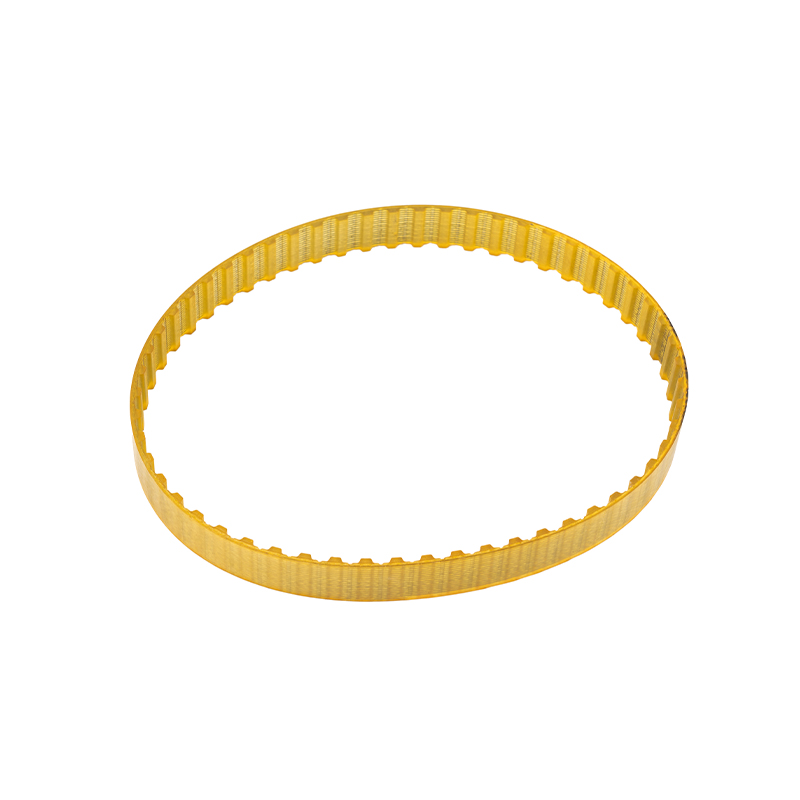Synchronous belt: an indispensable core component in mechanical transmission
2025-07-30
Content
- 0.1 The importance of synchronous belts in mechanical transmission systems
- 0.2 Wide application and market demand of synchronous belts
- 1 Definition and basic principle of synchronous belt
- 2 Working principle of synchronous belt
- 3 Main advantages of synchronous belts
- 4 Application fields of synchronous belts
In modern mechanical transmission systems, synchronous belts are undoubtedly a vital component. As an efficient and precise transmission method, synchronous belts are widely used in various industrial equipment, automotive systems, household appliances and high-tech fields due to their unique structural design and working principle. Compared with traditional belt and chain transmission systems, synchronous belts stand out in many fields with their high precision, high efficiency and low noise characteristics, becoming an indispensable core component in mechanical transmission.
The wide application of synchronous belts not only improves the working efficiency and precision of equipment, but also promotes the continuous progress of technology in many industries. With the acceleration of industrialization and the increasing demand for high-performance mechanical equipment, the market demand for synchronous belts has also shown a continuous growth trend. Especially in precision fields such as high-speed railways, automated production lines, automobile engines and medical equipment, the application of synchronous belts is showing an increasingly important position.
The importance of synchronous belts in mechanical transmission systems
Mechanical transmission systems are one of the most basic technologies in modern industry, and synchronous belts, as an important component of them, undertake the task of precise and reliable power transmission. Unlike traditional belt and chain transmission, synchronous belts do not rely on friction during transmission, but achieve precise power transmission through the meshing between belt teeth and gears. This transmission method has very high transmission efficiency, can avoid power loss caused by slippage, and ensure the stability and accuracy of the equipment during operation.
The main advantages of synchronous belts in transmission systems are reflected in the following aspects:
Slip-free transmission: The meshing of synchronous belts with gears makes its transmission process very precise, and there will be no slippage like traditional belts. This means that synchronous belts can achieve precise speed matching and maintain a good transmission ratio and working condition during long-term use.
High efficiency and low maintenance: Since synchronous belts do not generate excessive friction and heat during operation, they have high working efficiency and low energy loss. In addition, due to less wear, the maintenance requirements of synchronous belts are much lower than traditional transmission methods, which can effectively reduce the operating costs of equipment.
Quiet and low noise: Compared with traditional chains or belts, synchronous belts have significantly lower noise, which is suitable for environments with high noise requirements, improving the comfort and user experience of the equipment.
Durability and long life: Synchronous belts are usually made of high-strength materials such as polyurethane, rubber and steel wire, which have excellent wear resistance and aging resistance, making synchronous belts have a long service life and reducing equipment downtime and replacement frequency.
Precise control and stability: The tooth design of synchronous belts can ensure stable power transmission and precise control of equipment operation under different load and speed conditions. This feature is particularly suitable for fields with high precision requirements, such as robots, precision machinery and automated production lines.
|
Functions/Features |
Concrete effect |
Contributions to mechanical transmission systems |
|
Efficient transmission |
The synchronous belt meshes precisely with the gear teeth through the tooth shape, resulting in high transmission efficiency |
Ensure that energy loss during transmission is minimized and improve overall efficiency. |
|
No slip |
The teeth of the synchronous belt and the synchronous wheel are tightly meshed to avoid slippage |
Ensure the accuracy of power transmission, avoid power loss and ensure efficient operation. |
|
Low noise |
Due to the reasonable design of the synchronous belt and the proper selection of materials, the noise during transmission is low |
Provides a quieter working environment and reduces disturbance to the working environment and operators. |
|
High load carrying capacity |
High-strength material and reasonable design enable the synchronous belt to carry a large load |
Under high-load conditions, the system stability is guaranteed and it can adapt to various industrial application scenarios. |
|
Long-term stability |
Use wear-resistant and anti-aging materials to extend service life |
Reduce maintenance and replacement frequency, and improve the long-term operation stability and reliability of equipment. |
|
High-precision transmission |
The tooth shape of the synchronous belt is highly matched with the gear teeth to ensure accurate transmission |
In precision machinery and automation equipment, it ensures that high-precision requirements for movement are met. |
|
Easy maintenance |
Compared with chain or gear drive, synchronous belt usually does not require lubrication and is easy to maintain. |
Reduce the cost and labor intensity of daily maintenance and improve production efficiency. |
|
Strong adaptability |
Synchronous belts are suitable for various environments, including high temperature, humidity, chemical corrosion, etc. |
It is widely used in different working environments and can adapt to various working conditions. |
|
Temperature resistance |
Special materials (such as PU, rubber) enable the synchronous belt to work stably within a certain temperature range |
Maintains performance in extreme temperature environments, suitable for high or low temperature operations. |
|
Low energy consumption |
Compared with traditional chain drive and belt drive, the energy loss of synchronous belt is lower |
Reduce operating costs and improve the overall economic benefits of the system. |
Wide application and market demand of synchronous belts
With the increasing demand for industrial automation and high-precision equipment, the market application field of synchronous belts is gradually expanding. It is not only used in the traditional automotive industry and home appliance fields, but also in modern high-tech industries and emerging industries. Synchronous belts are also needed to provide power transmission and control.
Automotive industry
In the automotive industry, especially in the engine transmission system, synchronous belts have become one of the indispensable core components. Synchronous belts are widely used in the timing transmission system of the engine to ensure the precise opening and closing time of the intake and exhaust valves. Compared with traditional chains, synchronous belts have gradually become the first choice of more and more automakers due to their lower noise, higher efficiency and easy maintenance.
In addition to engines, synchronous belts are also widely used in systems such as automotive air conditioning, power steering and fan drives. With the rise of new energy vehicles, the demand for precision and efficient transmission systems for electric and hybrid vehicles continues to increase, further promoting the development of synchronous belt technology and the expansion of market demand.
Industrial Automation
In the field of industrial automation, especially in robotics, automated production lines and CNC equipment, the application of synchronous belts has become indispensable. The synchronous belt drive system can provide high-precision transmission to ensure that the robot arm, conveyor belt and equipment on the automated assembly line can operate smoothly and efficiently. The application of synchronous belts enables many production lines to operate stably under high-speed and high-precision conditions, reducing the error rate in the production process and improving the production efficiency and quality of products.
Medical equipment
The application of synchronous belts in medical equipment also shows great potential. Medical equipment, such as CT scanners, ultrasonic equipment, analytical instruments, etc., all require high-precision and high-reliability transmission systems. Synchronous belts are ideal transmission methods for many high-end medical devices due to their stability, quietness and low maintenance. Synchronous belts can ensure that medical devices accurately control each moving part during operation, avoiding measurement errors or system failures caused by transmission errors.
Home appliance industry
In the home appliance industry, synchronous belts are widely used in the drive systems of washing machines, air conditioners, refrigerators and other equipment. By driving the motor with a synchronous belt, home appliances can run smoothly under low noise and high efficiency conditions. Synchronous belts can also increase the service life of home appliances, reduce motor load, reduce energy consumption, and enhance the market competitiveness of products.
3D printing and precision equipment
With the rapid development of 3D printing technology, the requirements for transmission systems are also increasing. Synchronous belts have become an indispensable transmission component in 3D printers due to their high precision and stability. In precision equipment, any slight error may affect the final output quality. Synchronous belts provide guarantees for high-precision processing and printing by ensuring the accuracy of transmission.
Definition and basic principle of synchronous belt
Basic definition of synchronous belt
Synchronous belt is a belt transmission device used to transmit mechanical power, which is widely used in various mechanical systems. It is different from the traditional belt and chain transmission method. It adopts a toothed design. The working principle relies on the meshing between the belt teeth and the gears to achieve power transmission, rather than relying solely on friction. This design makes the synchronous belt have significant advantages in occasions with high precision and high efficiency requirements.
Synchronous belts usually consist of a belt body and synchronous wheels (or gears) at both ends. There are evenly distributed teeth on the belt body, and these teeth are precisely matched with the tooth shape of the synchronous wheel to ensure accurate transmission without slippage and error. Unlike traditional belt transmission, synchronous belts can provide very high transmission efficiency and stability through the precise matching of gears and toothed belts. Synchronous belts are not only suitable for low-speed applications, but can also be widely used in high-speed and high-load mechanical systems.
Basic structure of synchronous belt
The basic structure of synchronous belt includes the following parts:
Belt body: The belt body of synchronous belt is usually made of high-strength materials such as polyurethane, rubber or synthetic materials. The belt body may contain steel wire or other reinforcing materials inside to increase the strength and durability of the belt body. The surface of the belt body has a specific tooth shape for meshing with the gears of the synchronous wheel.
Belt teeth: The belt teeth are the key part for the precise matching of synchronous belt and synchronous wheel. The tooth shape of synchronous belt is usually triangular or trapezoidal, and its pitch, angle and height are precisely designed to ensure that it can fully match the tooth shape of synchronous wheel to avoid slippage.
Synchronous wheel: The synchronous wheel is the gear used with the synchronous belt. The tooth shape of the synchronous wheel matches the tooth shape of the synchronous belt to ensure accurate power transmission. The synchronous wheel is usually made of durable materials such as aluminum alloy, steel or plastic.
Reinforcement layer: Synchronous belts often contain steel wire or fiber reinforcement layers to increase the strength and durability of the belt body and reduce elongation or deformation caused by external forces.
Surface coating: In order to improve wear resistance and aging resistance, the surface of the synchronous belt is usually coated with a special coating to prevent wear, corrosion and environmental factors.
Working principle of synchronous belt
The working principle of synchronous belt mainly depends on the meshing of belt teeth and gears, while traditional belts rely on friction to transmit power. In the synchronous belt system, the tooth shape of the belt teeth and the synchronous wheel are precisely matched, and the power is transmitted through the meshing between the gears. This design ensures the accuracy and high efficiency of the transmission and avoids the slip phenomenon in traditional belt transmission.
Precise meshing: The teeth of the synchronous belt and the tooth shape of the synchronous wheel are very closely matched. When working, the belt teeth are fully meshed in the tooth grooves of the synchronous wheel. This meshing method eliminates the slip and deviation problems caused by uneven friction in traditional belt transmission. Through this precise meshing, the synchronous belt can transmit constant power and speed, ensuring the stability of the equipment during operation.
Slip-free transmission: One of the key features of the synchronous belt is slip-free transmission. In traditional belt transmission, due to friction, slip may occur between the belt and the wheel, resulting in reduced transmission efficiency and unstable speed. In the synchronous belt system, due to the direct contact of the teeth, there is no slip during the transmission process, ensuring efficient power transmission.
High-efficiency transmission: The tooth shape and structural design of the synchronous belt make it have low energy loss, maintain efficient energy conversion during the transmission process, and generate almost no heat and friction loss. This makes the synchronous belt system particularly suitable for efficient and energy-saving mechanical equipment, especially in applications that require precise control, such as robots, precision machinery and industrial automation.
Precise control and synchronization: The synchronous belt not only ensures precise power transmission, but also enables precise speed control. Due to its precise tooth shape matching, the various components in the mechanical equipment can maintain perfect synchronization, avoiding the unstable operation caused by friction fluctuations in traditional belt transmission.
Difference from other transmission methods (such as belts and chains)
Synchronous belts are significantly different from traditional belts and chains in terms of transmission method, efficiency, maintenance requirements, etc. The following is a comparison between synchronous belts and belts and chains:
Synchronous belts vs belts
Transmission method: Traditional belts mainly rely on friction to transmit power, so they are affected by factors such as friction, tension and temperature. Synchronous belts transmit power through the precise meshing of belt teeth and gears, without relying on friction, which ensures higher transmission efficiency and longer service life.
Efficiency and stability: Due to the limitation of friction, traditional belts are prone to slipping at high speeds and high loads, resulting in reduced efficiency and poor stability. Synchronous belts can operate stably under high speed and high load conditions, providing precise power transmission.
Noise and maintenance: Synchronous belts have low noise and less maintenance requirements due to their precise tooth design. Traditional belts may produce loud noise due to wear during long-term operation, requiring more frequent maintenance and replacement.
Synchronous belt vs. chain
Transmission accuracy: The transmission accuracy of the chain is low, and it is easily affected by the chain relaxation and elongation, resulting in unstable transmission. The synchronous belt can achieve high-precision and high-stability power transmission through the precision-designed tooth shape.
Noise and vibration: Chain transmission generates large noise and vibration when working, especially at high speed or heavy load. The tooth shape and structural design of the synchronous belt can effectively reduce noise and vibration, and is suitable for a quiet environment with high requirements.
Maintenance and life: The chain needs to be regularly refueled and the tension adjusted, and the maintenance work is more cumbersome. The synchronous belt does not require frequent maintenance and adjustment, and its service life is longer, which can reduce the operating cost of the equipment.
Comprehensive comparison:
Compared with traditional belts and chains, the biggest advantage of synchronous belts is the transmission accuracy, efficiency, stability and low maintenance requirements. Especially in mechanical systems that require high precision and high efficiency, synchronous belts have become the best transmission choice. Its characteristics of no slip, low noise and high efficiency make it widely used in modern industry, automobiles, medical equipment and other fields, and it continues to replace traditional belt and chain drives.
|
Features/Transmission mode |
synchronous belt |
belt |
chain |
|
Transmission efficiency |
High efficiency, no slip, stable transmission efficiency |
Low efficiency and prone to slippage, especially at high speeds and high loads |
High efficiency, capable of stable operation under heavy load conditions |
|
Transmission accuracy |
High precision, ensuring synchronous transmission, suitable for applications with high precision requirements |
Low precision, prone to slippage, resulting in inaccurate speed |
Low precision, prone to transmission errors due to wear and elongation |
|
Load carrying capacity |
Suitable for medium to medium-high load applications with relatively limited load carrying capacity |
Suitable for low load environments, cannot carry high loads |
High load carrying capacity for heavy machinery and high power applications |
|
Durability and maintenance |
Long service life and long maintenance intervals, but this can be affected under high loads |
Requires frequent maintenance, prone to wear, tension adjustment needs to be done regularly |
Very durable, especially suitable for harsh environments, but requires regular lubrication and adjustment |
|
Noise and Vibration |
Low noise and low vibration, suitable for applications with noise requirements |
Loud noise, especially at high speeds |
Loud noise, especially at high load and high speed |
|
Applicable scenarios |
High precision, low noise, medium to medium-high load applications, such as robots, CNC machine tools, etc. |
Low-load, low-cost applications, suitable for general equipment |
Heavy load, high power applications such as heavy machinery, agricultural equipment, etc. |
|
Cost |
Higher, especially in high load applications, more expensive than belts and chains |
Low, suitable for most common devices |
Low, suitable for high power equipment, economical |
|
Environmental adaptability |
It has high requirements on temperature, humidity and other environmental conditions, especially high or low temperatures may affect performance |
More flexible and can adapt to harsh environments, but prone to aging at high temperatures |
Strong adaptability, especially able to operate stably under high load and harsh environment |
Working principle of synchronous belt
As a key component in modern mechanical transmission system, synchronous belt plays an irreplaceable role in precision machinery and high-efficiency system due to its unique working principle. The core advantage of synchronous belt lies in its transmission mode of gear matching, which can ensure a non-slip transmission process through precise tooth meshing. This not only improves the transmission efficiency of the mechanical system, but also ensures the accuracy and stability of the equipment during operation.
Gear matching transmission mode
The working principle of synchronous belt is fundamentally different from the transmission mode of traditional belt or chain. Traditional belts rely on friction to transmit power, so they are affected by factors such as friction, tension, and temperature, and are prone to slippage and instability. The synchronous belt adopts a tooth design, relying on the meshing between the belt teeth and the synchronous wheel (gear) to transmit power. The precise matching of the belt teeth and the synchronous wheel tooth groove eliminates the slip problem and ensures the accuracy and efficiency of the transmission process.
Tooth design: The teeth of the synchronous belt usually adopt trapezoidal or triangular tooth shape. This design makes the contact between the teeth and the gear more stable and has a strong load-bearing capacity. The precise matching of the tooth grooves of the belt teeth and the gear ensures the close combination of the two during operation, thereby improving the transmission efficiency.
Meshing mode: During the transmission process of the synchronous belt, the meshing of the belt teeth and the gear directly transmits power without friction loss. Therefore, it can avoid slipping, deviation or energy loss caused by insufficient or excessive friction in traditional belt transmission. The high-precision matching during the meshing process makes the power transmission more efficient and stable.
Efficient transmission: Since the working mode of the synchronous belt is to transmit power through precise meshing, this greatly reduces the heat and energy loss generated by friction during the transmission process. This enables the synchronous belt to work at a higher efficiency state compared to traditional belt transmission, while extending its service life.
How to achieve precise synchronous transmission
Synchronous transmission is a major feature of synchronous belts. It means that during the transmission process, the speed of the input and output ends are always consistent, and the transmission ratio is accurate and stable. The synchronous belt can achieve precise synchronous transmission, mainly due to its tooth design and the precise meshing of the belt teeth and gears.
Tooth shape and gap control: The tooth shape design of the synchronous belt is a key factor to ensure precise transmission. The tooth shape of the synchronous belt is usually trapezoidal or triangular. This design not only provides better meshing, but also effectively controls the meshing gap and reduces friction and energy loss between the tooth shapes. The precise manufacturing of the tooth shape makes the meshing process between the synchronous belt and the synchronous wheel very stable, thus ensuring precise synchronous transmission.
Constant transmission ratio: During the operation of the synchronous belt transmission system, the speed ratio of the input and output ends remains constant. This is due to the characteristics of the synchronous belt tooth shape design. Regardless of how the load changes, the meshing of the belt teeth and the gears always maintains a fixed transmission ratio. Through this design, the synchronous belt can ensure the coordinated operation of all parts of the equipment and avoid errors or instability caused by changes in the transmission ratio.
Reduce system errors: Since the synchronous belt does not rely on friction transmission, the errors caused by friction common in traditional belt transmission will not be generated during operation. In addition, the precise meshing of the belt teeth and the gears can avoid errors caused by uneven tension or temperature changes, ensuring that the operating accuracy of the equipment remains stable under high load and high speed conditions.
Stable dynamic performance: When the synchronous belt is running at high speed, it can stably transmit power and avoid transmission instability or misalignment caused by high-speed rotation. This is because the design of the synchronous belt can effectively balance vibration and reduce dynamic impact, thereby ensuring the stability of the mechanical system.
How to prevent slip
In traditional belt transmission, slip is a common problem. Slip can cause energy waste, unstable transmission, and even damage to the equipment. The synchronous belt completely eliminates slip through the precise meshing between the belt teeth and the synchronous wheel, ensuring a high-efficiency and high-precision transmission process. The mechanism to prevent slippage is mainly reflected in the following aspects:
Accurate tooth design: The tooth design of the synchronous belt is very precise, and the matching accuracy between the tooth top and the tooth groove is very high. Through this precise matching, the belt teeth and the gear can be in close contact, thus avoiding slippage. The tooth design usually adopts a trapezoidal or triangular shape that is conducive to meshing, ensuring stable transmission under high load and high speed operation.
Use of high-strength materials: Synchronous belts usually use high-strength materials such as polyurethane, rubber and steel wire, which can not only increase the strength of the belt body, but also ensure that the synchronous belt does not stretch or deform when working under high load. The strength and toughness of these materials enable the synchronous belt to withstand greater tension and load, thereby avoiding slippage caused by excessive load.
Uniform tension control: The transmission system of the synchronous belt is usually designed with a tension control device to ensure that the belt body maintains constant tension during operation. Uneven tension will cause the teeth of the synchronous belt to not mesh tightly with the gear, thereby increasing the risk of slippage. Through precise tension control, the synchronous belt can always maintain precise meshing with the gear during the transmission process, avoiding slippage.
Reduction of friction and vibration: Slippage in traditional belt transmission is usually accompanied by friction and vibration, which will lead to reduced transmission efficiency and system instability. The synchronous belt adopts precise tooth meshing, which almost eliminates friction and vibration problems, so that the equipment can still operate smoothly under high speed and high load conditions without slippage, vibration or unstable transmission.
Main advantages of synchronous belts
Synchronous belts are increasingly used in modern mechanical transmission systems, thanks to their many superior performance characteristics. Compared with traditional belt and chain transmission methods, synchronous belts have significant advantages in efficiency, stability, noise, maintenance costs, precision and load-bearing capacity.
High-efficiency transmission: no slip, no skidding
One of the biggest advantages of synchronous belts is their efficient transmission capacity. Compared with traditional belt transmission, synchronous belts adopt a tooth design and meshing transmission method with synchronous wheels, which avoids the common slip phenomenon in friction transmission, thereby achieving high-efficiency power transmission.
Slip-free transmission: Traditional belt systems rely on friction to transmit power, but due to the instability of friction, traditional belts often slip, resulting in reduced power transmission efficiency. The precise meshing of the tooth shape of the synchronous belt and the gear eliminates the slip problem and ensures constant power transmission. Therefore, synchronous belts can effectively ensure the efficiency of the transmission process in various high-precision applications, especially under high load and high-speed operating conditions, which can effectively reduce energy loss and heat generation, and maintain low operating costs.
No slippage: Since the belt teeth of the synchronous belt match the gears very precisely, there will be no slippage during operation. Whether at high speed or high load, the power transmission is still stable and efficient. Therefore, systems using synchronous belts tend to provide more stable performance and have smaller transmission ratio errors, thus ensuring long-term stable operation of the system.
Significant energy saving effect: Compared with traditional belt and chain drives, synchronous belts can reduce energy loss and improve overall transmission efficiency. The energy saving effect is particularly evident in large industrial equipment and mechanical systems. Since the synchronous belt has almost no slippage, no additional energy is wasted during the transmission process, thus achieving more efficient mechanical operation.
Low noise, low maintenance cost
Another significant advantage of synchronous belts is their low noise and low maintenance cost, which is particularly suitable for environments that require quiet operation and long-term stable use.
Low noise operation: Compared with traditional chain drive or belt drive, synchronous belts have lower operating noise. Chain drive and belt drive usually make louder noise during operation, especially at high speed and heavy load, the noise is more obvious. The synchronous belt has a precise tooth shape, and the meshing process between the belt teeth and the gear is smooth, without the sound of impact and friction of chains or belts, which can provide a quieter working environment. This makes the synchronous belt particularly advantageous in noise-sensitive applications such as medical equipment, precision instruments, and office automation equipment.
Low vibration: The precise meshing design of the synchronous belt can effectively reduce vibration, which is different from the vibration generated by traditional belt or chain drive systems during operation. The advantage of low vibration not only improves the comfort of the equipment and the quality of the working environment, but also reduces the wear of equipment components caused by vibration, and extends the service life of the system.
Low maintenance cost: The synchronous belt adopts a precise tooth shape design, which reduces the frequent maintenance needs caused by wear, improper tension adjustment and other problems in traditional belt drives. Compared with the chain system, the synchronous belt does not need to be regularly refueled and tension adjusted, thus saving a lot of maintenance costs. In the maintenance process of the synchronous belt, the user is mainly concerned with regularly checking whether the belt body is worn and whether the tooth shape is normal, without the need for frequent and complex adjustments or replacements, which greatly reduces the difficulty and cost of maintenance.
Long-term stability: The synchronous belt system maintains relatively stable tension during operation and is almost unaffected by external temperature changes or workload. This means that even in extreme working environments, the synchronous belt can still maintain good performance, reducing replacement cycles and maintenance frequency. Compared with chain and belt systems, equipment using synchronous belts can reduce large-scale repairs and maintenance, thereby reducing the maintenance cost of the entire system.
High precision and high load-bearing capacity
Another core advantage of synchronous belts is their high precision and high load-bearing capacity, which enable them to maintain stable and precise operation under demanding working conditions.
High-precision transmission: The tooth design of the synchronous belt enables it to maintain a high degree of synchronization during operation, ensuring that the speed ratio between the input and output shafts is always consistent. This precise synchronous transmission method ensures high-precision operation of the entire mechanical system. In applications that require high-precision control, such as robotics, CNC machine tools, printers, and automation equipment, synchronous belts can avoid loss of precision due to uneven friction due to their precise rotation transmission. Therefore, equipment using synchronous belts usually has higher control accuracy and more stable output results.
High load-bearing capacity: The strong materials and precision structure used in synchronous belts enable them to operate stably under higher loads. Compared with traditional belts, synchronous belts can withstand greater tension and load without deformation or breakage. This makes synchronous belts an ideal choice for heavy loads in industrial applications, especially in mechanical systems that need to transmit high power, providing stronger power transmission capabilities. Whether it is high-load transportation, heavy machinery, or equipment that requires high power transmission, synchronous belts can continue to work stably without affecting performance.
Adapt to high and low temperature environments: Synchronous belts are usually made of high-strength polyurethane, rubber or reinforced fiber materials, which have good high and low temperature resistance. This allows synchronous belts to maintain their transmission stability and efficiency in various extreme environments. For example, some industrial equipment works in extremely cold or high temperature environments. Traditional belt systems often cannot operate normally due to material deformation or changes in friction, while synchronous belts can continue to work stably, reducing the impact of environmental changes on mechanical equipment.
Durable: Since synchronous belts have high wear resistance and are not easily deformed or worn due to frequent operation, their lifespan is usually long. This allows mechanical equipment using synchronous belts to maintain efficient and accurate working conditions for a long time. Compared with belts and chains, synchronous belts have more significant long-term performance, and users do not need to frequently replace or repair them, reducing the overall operating cost of the equipment.
Application fields of synchronous belts
As an efficient and precise transmission element, synchronous belts are widely used in many industries due to their excellent performance. Whether in the automotive industry that requires high efficiency, or in the fields of industrial automation, 3D printing and medical equipment that require precision control, synchronous belts have become an indispensable core component in many devices due to their advantages such as no slip, low noise, high precision and high load capacity.
Automotive industry: engine drive, air conditioning system, etc.
In the manufacturing and operation of modern automobiles, synchronous belts play a vital role. Especially in engine systems and other auxiliary systems, synchronous belts have become the key guarantee of vehicle performance due to their high efficiency, stability and precision.
Engine drive: Synchronous belts are widely used in the drive system of automobile engines. The synchronous belts in automobile engines are used to drive multiple components such as crankshafts, camshafts, superchargers and water pumps. Traditional belt drive systems are prone to slippage, wear and low transmission efficiency, while synchronous belts effectively avoid slippage and slippage through tooth transmission, ensuring efficient transmission and stable operation of the engine at high speeds. The synchronous belt can maintain a constant speed ratio and ensure the synchronous operation of various engine components, thereby improving the working efficiency and durability of the engine.
Air conditioning system: The synchronous belt is also used in the automotive air conditioning system to drive the air conditioning compressor, fan and other auxiliary components. In the automotive air conditioning system, due to the need for long-term stable operation, the use of synchronous belts can avoid the failure of traditional belts due to insufficient friction or excessive load, and maintain the long-term stability of the system.
Transmission efficiency and safety: The synchronous belt system in the automobile engine has a direct impact on the operation of the entire power system. The synchronous belt reduces the energy loss of the engine under high load or harsh environment through precise tooth matching, and improves the fuel efficiency and performance of the car. At the same time, stable synchronous transmission also ensures the reliability of the engine and avoids safety hazards caused by failure of the transmission system.
Industrial automation: robotic arms, conveyor belts, robots, etc.
With the continuous improvement of the level of industrial automation, the application of synchronous belts in the field of automation is becoming more and more extensive. With its high precision, high efficiency and low maintenance cost, the synchronous belt plays an important role in the mechanical transmission system.
Robotic arm transmission: In industrial automation, robotic arms are often used to perform repetitive, high-precision operations. The application of synchronous belts in robotic arms ensures the accuracy and stability of movement. Since synchronous belts can maintain precise synchronous transmission at high speeds, they ensure the coordinated operation of various joints and components of the robotic arm. In addition, the low noise and low vibration characteristics of synchronous belts are also very suitable for use in precision working environments, avoiding noise interference to workers.
Conveyor belt system: The application of synchronous belts in conveyor belt systems, especially in food processing, packaging, assembly and other industries, has demonstrated its efficient transmission advantages. Synchronous belts can maintain a constant speed during long-term operation to ensure the accuracy and stability of material transfer. Compared with traditional chains or belts, the non-slip characteristics of synchronous belts can reduce problems such as material sliding and dislocation, ensuring the efficient operation of the production line.
Robot application: The application of synchronous belts in industrial robots is also of great significance. Modern robots require high-speed and precise control, and also need to carry large loads. In these robot systems, especially those that perform assembly, welding or precision inspection, the timing belt provides high-precision transmission through its precise tooth meshing, ensuring the accuracy and stability of the robot's movement. Moreover, as the robot's working environment continues to change, especially in high or low temperature environments, the high temperature resistance and durability of the timing belt make it an ideal transmission component.
High-precision fields such as 3D printing and medical equipment
In high-precision fields such as 3D printing and medical equipment, the transmission system is required to operate accurately within a very small tolerance range. With its excellent transmission accuracy and stability, the timing belt is widely used in these devices with extremely high precision requirements.
3D printer transmission system: 3D printing technology occupies a pivotal position in modern manufacturing, and the application of timing belts in 3D printers is extremely critical. The motion control system of a 3D printer requires very precise transmission elements to ensure that every tiny adjustment during the printing process can be accurately executed. With its high precision and no slip characteristics, the synchronous belt ensures precise position control in the X, Y, and Z axis drive of the printer, so that the printed objects can meet the requirements of high precision and high quality.
Application in medical equipment: In modern medical equipment, especially in imaging equipment, laboratory automation equipment and other precision diagnostic and treatment instruments, synchronous belts are widely used. For example, CT scanners, magnetic resonance imaging (MRI) equipment and ultrasonic diagnostic equipment all rely on synchronous belts to drive rotating parts or transmit power. Synchronous belts can maintain precise synchronous transmission when the equipment is running at high speed, reducing the diagnostic deviation caused by errors in the equipment. At the same time, the characteristics of low noise and low vibration make synchronous belts widely used in medical equipment, avoiding unnecessary interference to patients and medical staff.
High-precision mechanical equipment: In some high-precision mechanical equipment, such as laser cutting machines, precision measuring instruments, etc., the application of synchronous belts is also crucial. These equipment are required to work at the micron level of accuracy, and any slight transmission error may lead to a decline in product quality or an increase in measurement errors. Synchronous belts can provide precise and stable transmission, ensuring that the equipment can maintain high precision and high stability after long-term operation.
High-precision control of medical devices: Modern medical devices, such as automated injection devices, infusion pumps, therapeutic lasers and other equipment, require precise transmission systems to ensure precise control and stable operation of the equipment. The application of synchronous belts in these medical devices can avoid the friction and slippage of traditional transmission systems, ensuring that the equipment can perform various operations efficiently and accurately within a safe range, and provide more efficient and reliable medical services.


 English
English 中文简体
中文简体